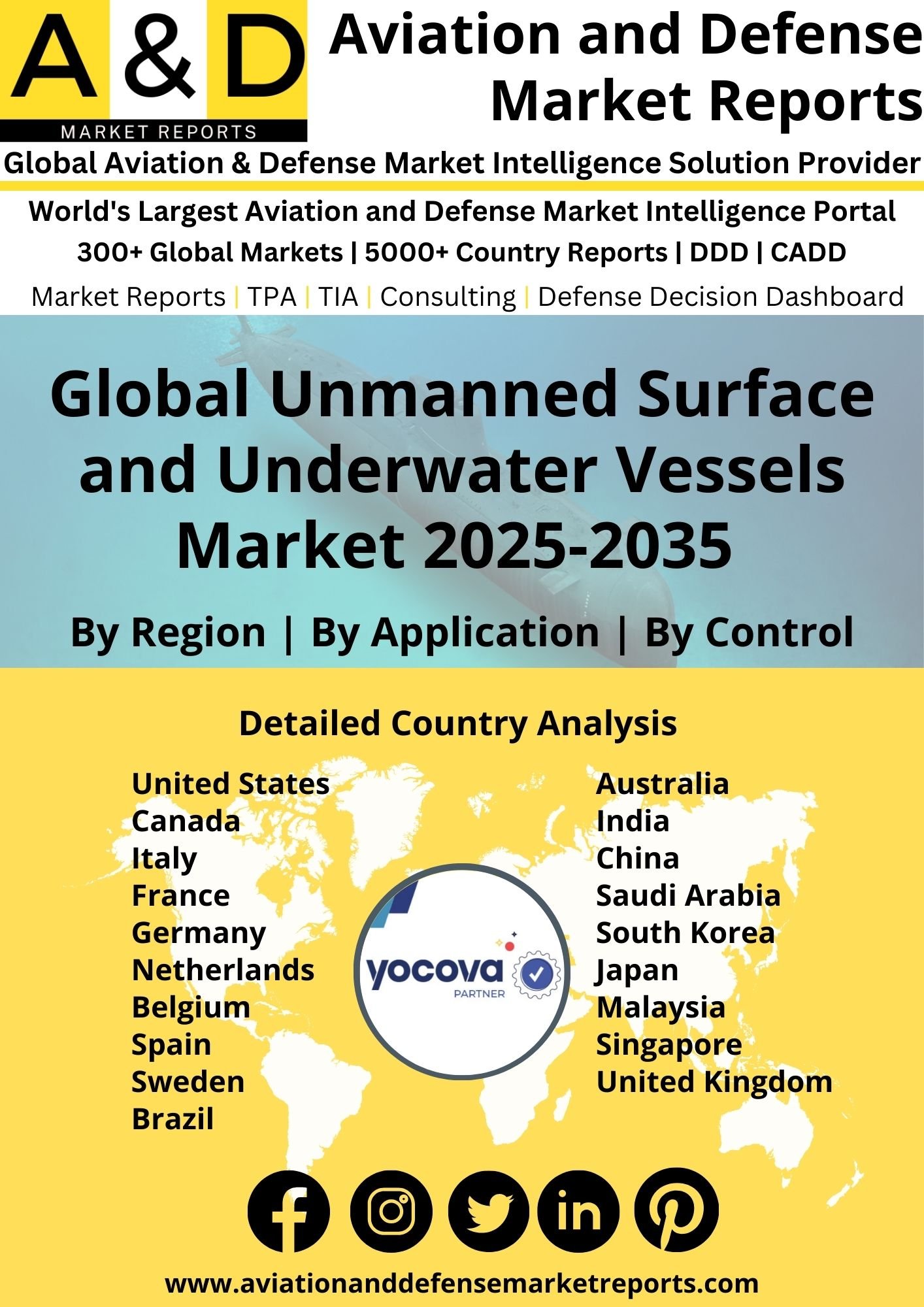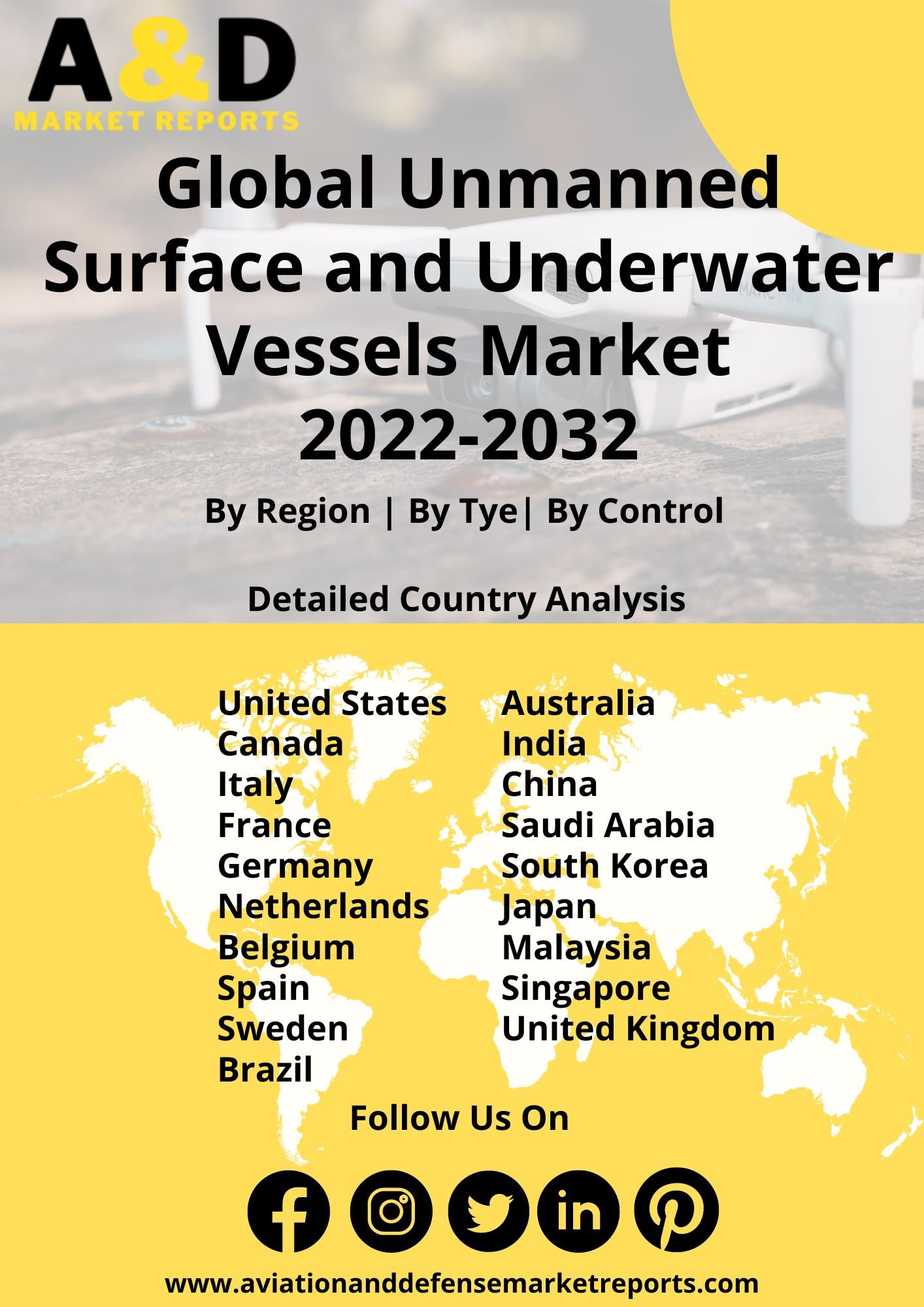Description
Unmanned Surface and Underwater Vessels Market
Frequently Asked Questions of USUV Market
Unmanned surface vehicles (USVs), which are unmanned marine vehicles that maintain continuous, considerable contact with the surface but are not manned, have attracted less attention and investment than unmanned vehicles that operate in the air, on the ground, or beneath the sea. However, autonomous surface vehicles have become increasingly crucial for military operations in recent years. Military authorities are taking seriously the development of unmanned surface vessels for missions such as worldwide cargo delivery, troop and support staff movement, anti-submarine warfare, maritime surveillance, and even offensive operations against enemy ships. While USVs have the potential to transform the navy, fleet structures will evolve rather than be replaced. Rather than fantasizing about a hypothetical new fleet organization, plans need to be put in place to accommodate USVs into the current one. Small remote-controlled USVs are already in service as auxiliary vessels for littoral combat ships, performing reconnaissance, countermine, and anti-submarine, and electronic warfare operations.
Most research into unmanned underwater vehicles market has gone unnoticed by the general public and has received little attention in recent years, but this has always been the case with undersea warfare, unlike the huge shiny fighter jets or tough-looking tanks. Submarines have traditionally been far more covert, owing to their location underwater throughout the world’s oceans. Almost every country’s submarine service frequently conducts the most top-secret operations, gathering intelligence, deploying Special Forces, and occasionally breaching another country’s borders. The majority of UUVs are used for intelligence gathering. They, like UAVs, are relatively cheap, can be readily deployed by ships and even other submarines, and can be operated in huge numbers, allowing the forces to collect substantially more intelligence while greatly minimizing the cost of operating and possibly losing one.
The U.S. Navy has identified two acquisition projects for future procurement: Large Unmanned Surface Vehicles (LUSVs) and Medium Unmanned Surface Vehicles (MUSVs) (MUSVs). MUSVs would range in length from 45 to 190 feet and would be tasked with intelligence, surveillance, and reconnaissance payloads, as well as electronic warfare tasks. LUSVs would be 200 to 300 feet long and would be more offensive in nature, equipped with anti-ship and land-attack missiles. Both programs are crew-optional, letting a small crew remain on board for missions that require more hands-on monitoring.
Arktur, a futuristic submarine concept, and Surrogat-V, Russia’s massive unmanned underwater vehicle, were unveiled at Arms Expo 2022. Although details on Arktur are scarce, a bulletin issued before the model appears to indicate that it is primarily intended to be a ballistic missile submarine, or SSBN, enhanced for Arctic operations. The model depicts a smoothed-out hull form with a safety sail position. The (UUV) has a very low profile.
Major factors driving Unmanned Surface and Underwater Vessels Market Growth
Modularity and flexibility are promoted to reduce the time and expense of modernizing in-service ships while also adapting to future uncertainty. Navies see modular systems as a way to deliver capability, which is fueling demand for modular UUVs intended for several missions. As a result, companies are constructing their UUVs in a modular framework, allowing new technologies to be implemented fast without requiring costly adjustments to the host platform. These are some of the key Unmanned surface and underwater marine vessels market trends driving the Unmanned surface and underwater marine vessels growth of the market.
Trends influencing the Unmanned-Surface and Underwater-Vessels Market Size
Microprocessors act as unmanned vehicle control centers, offering a platform for control and communications software that interfaces with collision avoidance sensors, high-definition cameras, and other sensors. The increasing volume of data collected by autonomous vehicles will necessitate more advanced data processing. When UUVs are employed in a crowded marine traffic zone, anti-collision technologies ensure safer navigation and improve autonomous navigation in restricted regions. On UUVs, several sensors such as vision sensors, sonar, inertial sensors, DVLs, and pressure sensors are utilized to avoid obstacles and navigate safely. To successfully evaluate incoming sensor data and draw meaningful conclusions, unmanned vehicle solutions must employ cutting-edge data analytics technologies. Through machine learning approaches, AI enables ‘continuous learning’ for unmanned vehicles, enabling complicated skills such as autonomous navigation.
Unmanned-Surface and Underwater-Vessels Market Forecast & Dynamics
Increasing defense spending will encourage the procurement of new UUV platforms, technologies, and capabilities. The increase in defense spending will encourage research and development in enabling technologies such as 3D printing and AI. Procurement will also be driven by prevailing geo-political conditions in Europe and the Asia Pacific. The Unmanned surface and underwater marine vessels market forecast includes a comprehensive market analysis and market size. The Unmanned surface and underwater marine vessels market analysis includes regional Unmanned surface and underwater marine vessels market size, drivers, restraints, and opportunities. The regional analysis also includes country-wise market size.
Unmanned Surface and Underwater Vessels Market Analysis for Recent Developments
Metron Inc. announced a $7.8 million contract from the Office of Naval Research for “advanced algorithm development for autonomous marine systems,” which would provide better data autonomy capabilities throughout U.S. Navy uncrewed undersea vehicles (UUVs). Metro will offer work relating to “mission and path planning, object identification, tracking and data fusion, autonomous behaviors, and Unmanned Underwater Vehicle (UUV) simulation” under the contract.
The global landscape of Unmanned Surface Vehicles (USVs) and Unmanned Underwater Vehicles (UUVs) has seen substantial advancements, transforming maritime operations across defense, research, and commercial sectors. USVs and UUVs, collectively known as unmanned maritime systems, offer versatile capabilities for tasks ranging from surveillance and reconnaissance to underwater exploration and data collection. In defense applications, USVs serve roles such as mine countermeasures, anti-submarine warfare, and intelligence, surveillance, and reconnaissance (ISR). UUVs are employed for underwater surveys, mine detection, and environmental monitoring. Their autonomy reduces risks to human operators in hazardous maritime environments.
Commercially, USVs play a vital role in maritime logistics, patrolling, and monitoring. UUVs are utilized for offshore inspections, marine research, and underwater infrastructure maintenance. Technological advancements include improved autonomy, sensor capabilities, and communication systems. Collaboration between industries, research institutions, and defense agencies promotes the development of standardized unmanned maritime systems, ensuring interoperability and efficient utilization across applications. The ongoing evolution of unmanned surface and underwater vessels in 2023 signifies a commitment to enhancing maritime capabilities, improving safety, and expanding the range of applications in the maritime domain.







